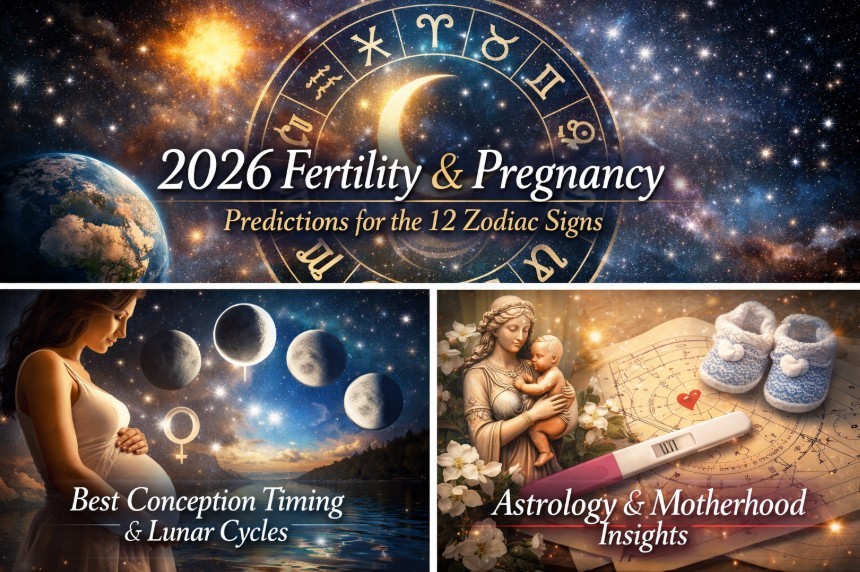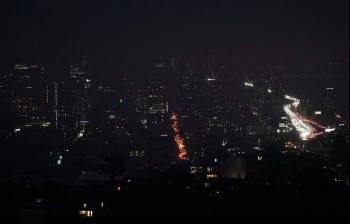Top 4 Most Dangerous Natural Phenomena That Could Change the World
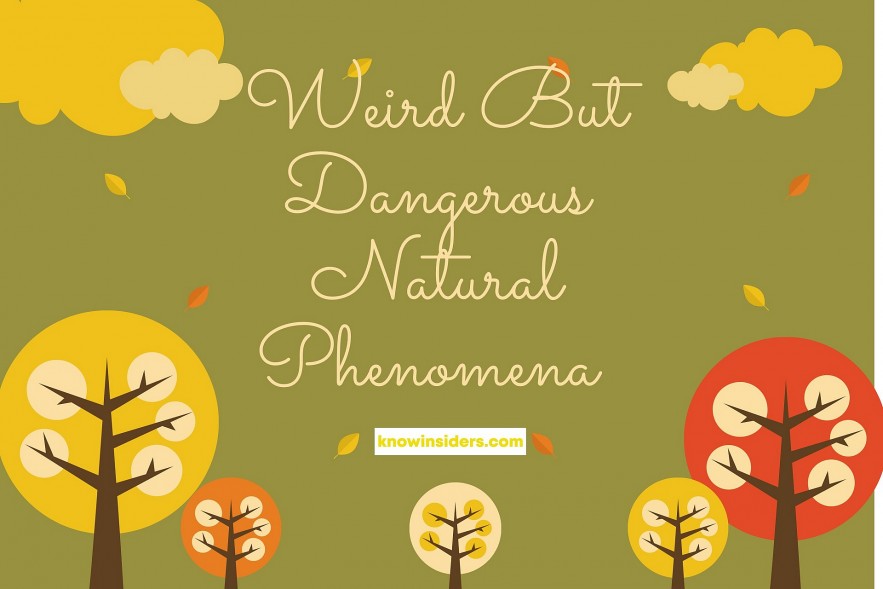 |
| Weird But Dangerous Natural Phenomena That Raise Climate Change Alert. Photo: KnowInsiders.com |
| Contents |
For many people, astronomical phenomena and stunning natural phenomena are not all that strange. Whether seen with the naked eye or only through captured images, the beauty of these phenomena continues to astound a great number of people.
But nothing is quite as lovely as it appears. The effects of climate change cause numerous natural scenes in addition to the stunning phenomena. This is interpreted as a warning about the detrimental effects that the planet's environment and the atmosphere of humans are having.
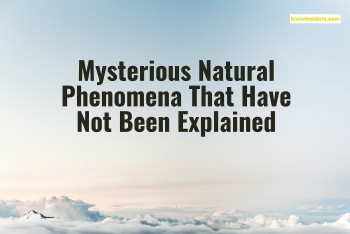 Top 8 Mysterious Natural Phenomena That Have Not Been Explained So Far Top 8 Mysterious Natural Phenomena That Have Not Been Explained So Far |
The Four Weirdest Natural Phenomena That Raise Climate Change Alert
1. Rainbow
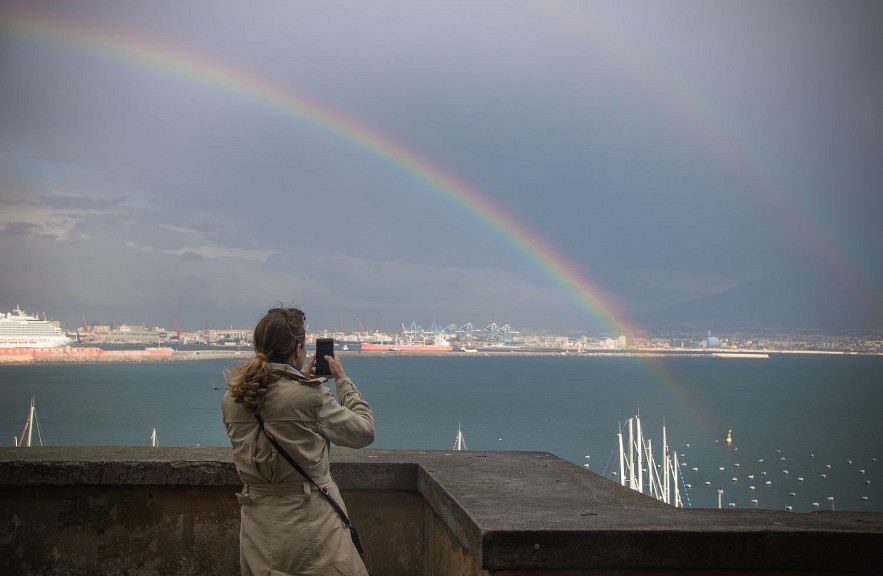 |
| Photo treehugger |
Although rainbows are thought to be a sign of hope and the future, scientists believe that the frequency with which rainbows occur is correlated with climate change. In the Arctic, rainbows are occurring more frequently these days. This is because there is less snowfall due to global warming. Big snowdrops appear in place of falling snow, making the arcs appear brighter. Furthermore, it is anticipated that the Amazon forest region, which is known for its rainbows, will see more frequent droughts due in part to its shrinkage.
Tropical rains are impacted by climate change as well, which reduces clouds and raises sun heat.
| By the end of the twenty-first century, the average land location on Earth will see roughly 5% more rainbows, per a new study by researchers at the University of Hawai'i (UH) at Mānoa. Although it makes sense to immediately attribute the rise in this colorful phenomenon to growing leprechaun populations or unrestrained use of the Care Bear Stare, the truth is far less entertaining. Climate change will accelerate the frequency of rainbows, as it will with other significant changes that will affect people living into the next century.1. "The highest emission scenario is expected to cause the largest change in mean global annual rainbow-days (i.e., days with at least one rainbow) by 2100, with a net increase of 4.0–4.9% due to climate change," the researchers write. "Approximately 21–34% of land areas will experience a decrease in rainbow days, while 66–79% will experience an increase in rainbow days. High-latitude and high-elevation regions with smaller human populations are the main locations for rainbow gain hotspots." |
2. Beach’s Blue Glow
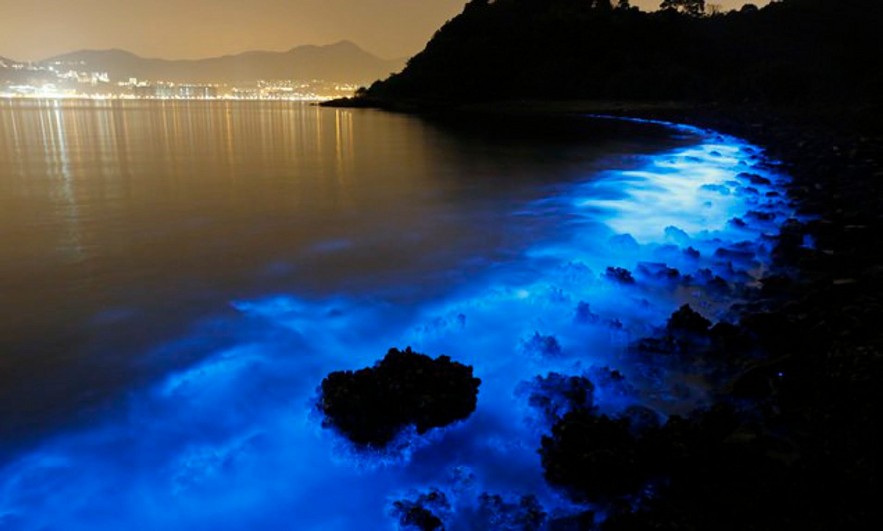 |
| Photo Daily Mail |
Many people have been reminded of a scene from a fairy tale when they see the lovely blue light that the waves are emitting on social media. As it happens, Noctiluca algae, a kind of phytoplankton, are the ones responsible for this phenomenon, as they transform their chemical energy into light energy when they wash ashore.
Sadly, deep-sea fishing may suffer as a result of this phenomenon, which marine experts believe is a sign of climate change.
Heavy rains and wastewater discharge into the sea are the likely causes of the bioluminescence phenomenon, according to Dr. Pravakar Mishra, an expert in coastal process and coastal management research at the National Center for Coastal Research (NCCR), as reported by Indian Express.
Sewage discharge into the sea and heavy rains can both trigger phytoplankton explosions. The occurrence of bioluminescent waves is also influenced by elements like ocean temperature and wind patterns, Mishra continued.
The phenomenon is a type of chemical reaction, according to Associate Professor Rebecca Case, a principal investigator at the Singapore Centre for Environmental Life Sciences Engineering and an expert on marine phytoplankton.
Dinoflagellates are microscopic marine algae that float with water currents. They are a kind of phytoplankton, also known as tiny marine plants. They generate luciferase, an enzyme that reacts with oxygen to produce light.
READ MORE: World Environment Day: History, Significance, Theme and Celebrations
Where does blue glow appear?Seawater mixes with oxygen when we swim, splash, or watch a wave break. The luminescence is brought on by this rise in oxygen. It doesn't always glow for the same reason. The best place to see luminous blooms at night is along the coast. According to Associate Professor Case, she has seen them off the coast of Sydney, Australia, where she used to live, as well as in Hawaii, Cape Cod, and Koh Tao, Thailand. |
Is it safe to get near the blue waves?Assoc Prof. Case stated that while dinoflagellates are the cause of harmful algal blooms or "red tide," bioluminescent dinoflagellates are rarely, if ever, toxic and there is "no need to be afraid." She declared that swimming in the water with these organisms and strolling along the beach are both safe. "Everyone should put swimming in a luminescent bloom on their bucket list—watching the water light up as your body glides through the waves is just magical," the woman continued. |
3. Frozen Bubbles
 |
| Photo NPR |
The amazing natural phenomenon known as "frozen bubbles" can be seen submerged in some lakes. However, these bubbles may pose a threat.
How do frozen bubbles form? Why is it risky, too?
Methane bubbles in frozen lakes are an incredible natural phenomenon, but they can be dangerous if they burst because methane can explode when exposed to a combustion spark. The frozen bubbles are freezing capsules of highly flammable methane gas. Considering that methane is a greenhouse gas and more hazardous to the climate and environment than carbon dioxide, one may wonder where methane originates from.
How do bubbles of frozen methane form?
Methane bubbles are created in water bodies when dead organic materials, such as plants and animals, sink to the bottom and are eaten by the bacteria there. The bacteria then release methane gas, which rises to the surface in the form of bubbles but turns into floating white ice crystals when it comes into contact with frozen water.
Methane bubbles that reach the surface in the summer completely burst, releasing methane into the atmosphere; however, in the winter, when the lake freezes, the ice traps the methane bubbles as they get closer to the surface.
Thousands of lakes in the Arctic produce methane, and as amazing as the bubble scene may be, it actually portends future environmental issues because rising global temperatures cause more permafrost to thaw, which allows frozen organic matter to thaw and preserve more. Given that methane causes more global warming than carbon dioxide, this raises the amount of methane released into the atmosphere, which concerns climate scientists. A potent greenhouse gas, methane traps heat approximately 25 times better than carbon dioxide, and as a result, increases in methane levels contribute to higher global warming.
In what part of the world are frozen bubbles found?
Several lakes worldwide are home to frozen methane bubbles, and the following are popular tourist spots to witness them:
Situated 90 km southwest of Rocky Mountain House in Alberta, Canada, Lake Abraham is a well-liked destination for tourists wishing to witness frozen methane bubbles. Abraham Lake's wintertime frozen waters are transparent, which provides Due to Abraham Lake's cold temperatures and winds of up to 48 km/h, a transparent ice surface forms on the lake's surface, providing visitors and tourists with amazing views of the frozen bubbles at the bottom of the lake.
Man-made Lake Barriere is situated west of Calgary's Chananzquez neighbourhood. From there, one can capture amazing images of frozen methane bubbles.
4. Blood Glaciers
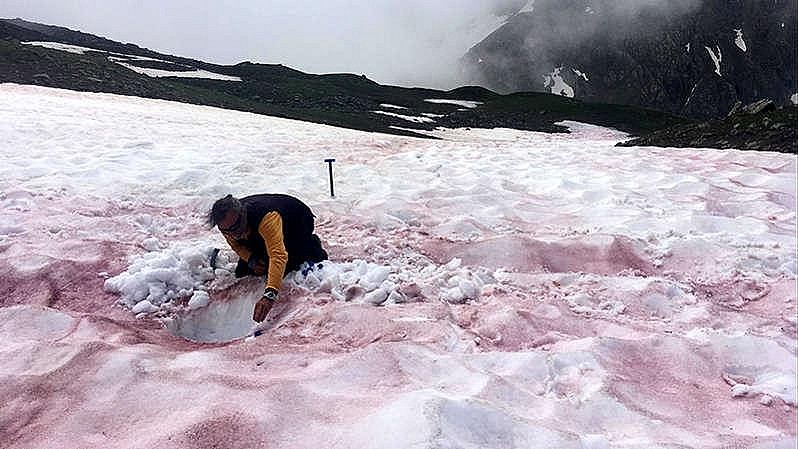 |
| Photo The Times |
Pink snow seems like an odd occurrence.
For centuries, people have noticed the sang de glacier, or glacier blood, phenomenon, which causes alpine snow to turn pink in the spring. Under the snow, Aristotle thought, it was the work of "red and hairy worms."
What then is the cause of glacier blood? Also, incidentally, known as watermelon snow. eruptions of algae. To shield themselves from UV radiation, they change color.
Pink snow may look pretty, but it doesn't bode well for global warming. Over 80% of the sun's radiation is typically reflected back into space by ice. The ice's diminished capacity to reflect heat due to color changes causes the glaciers to melt more quickly.
Why is pink snow bad?The ice absorbs more heat and melts more quickly when algae appear because the ice normally reflects more than 80% of the sun's radiation back into space. As the ice melts, more algae emerge because they are given access to essential air and water. It's interesting to note that Di Mauro mentions that visitors may also have an effect on the algae on the mountains. |
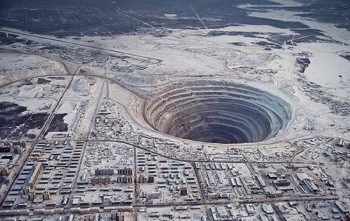 Top 10 Deepest Holes on the Planet by Natural Causes & Man-Made Top 10 Deepest Holes on the Planet by Natural Causes & Man-Made Explore the deepest holes on earth that are either natural or man-made. Deep holes in the earth are always a destination for those who love ... |
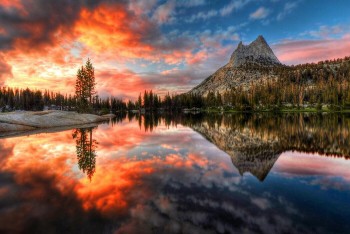 Top 10 Most Deadly Natural Wonders In The World Top 10 Most Deadly Natural Wonders In The World Natural wonders are not always wonderful. Be careful when visiting those nature wonders as they record high number of deaths annually due to risky landscapes. |
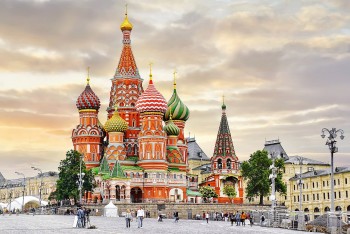 Top 10 Countries with the Richest Natural Resources Top 10 Countries with the Richest Natural Resources Natural resources on earth are increasingly depleted due to human destruction. Join KnowInsiders.com to learn about the Top 10 countries with the world's largest natural ... |
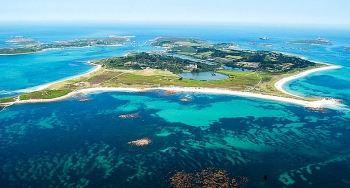 What are the Natural Wonders of the UK Today - Top 11 What are the Natural Wonders of the UK Today - Top 11 Even though the amazing natural wonders of the UK may not measure up to those of the US, Canada, or Australia, the occasionally peculiar but ... |





